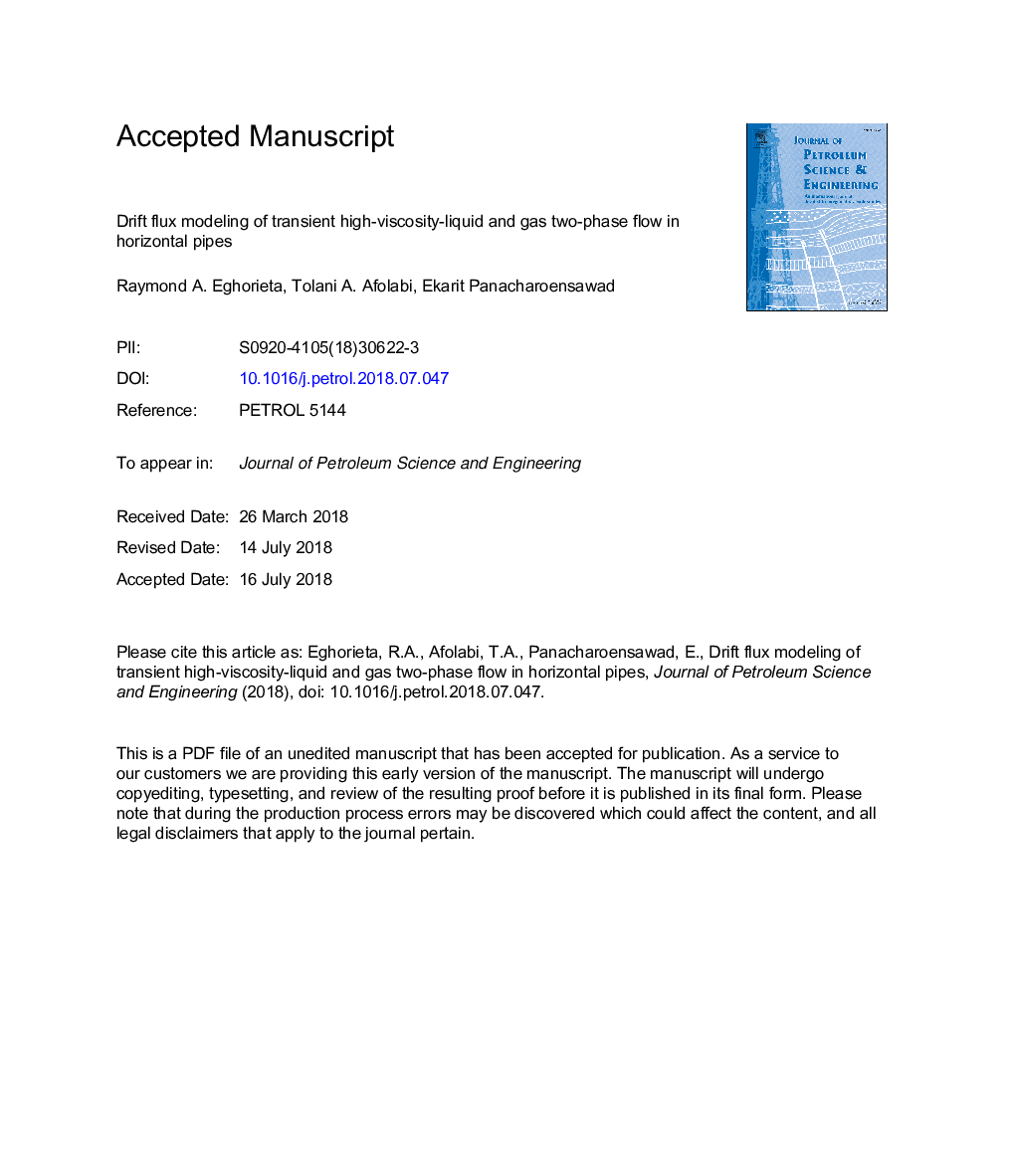| Article ID | Journal | Published Year | Pages | File Type |
|---|---|---|---|---|
| 8124342 | Journal of Petroleum Science and Engineering | 2018 | 53 Pages |
Abstract
The drift flux model was develop by using two mass conservation equation, a single mixture momentum equation, an algebraic slip relationship, and the new closure relationship for the drift velocity for the case of air and high-viscosity-oil in horizontal and near horizontal pipe. The Finite Volume Method (FVM) with staggered grid system was employed. The flux-splitting scheme was used for discretizing the flux term. The explicit Euler method with the consideration of Courant number. The model was solved using a hybrid shock capturing scheme often used for gas dynamics. Totally 31 transient cases were simulated and compared with the transient experimental result of air and high-viscosity oil data. It is the first time in this study to show that the drift flux model is capable of predicting the transient hydrodynamics of the air and high-viscosity oil cases. This model performed reasonably well with average relative error of 13.55% (Standard Deviation of 11.62%) with respect to experimental results.
Related Topics
Physical Sciences and Engineering
Earth and Planetary Sciences
Economic Geology
Authors
Raymond A. Eghorieta, Tolani A. Afolabi, Ekarit Panacharoensawad,
